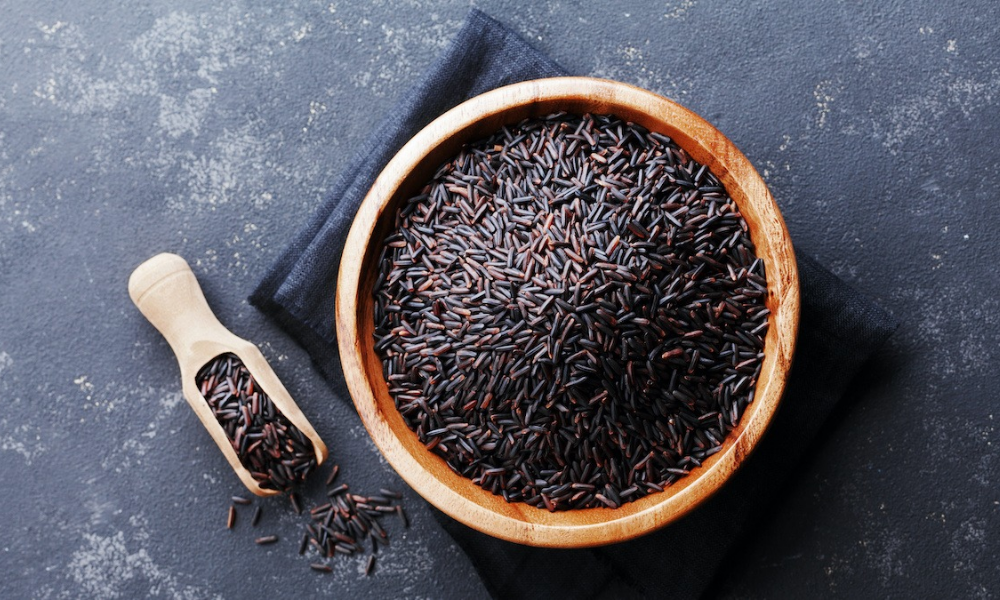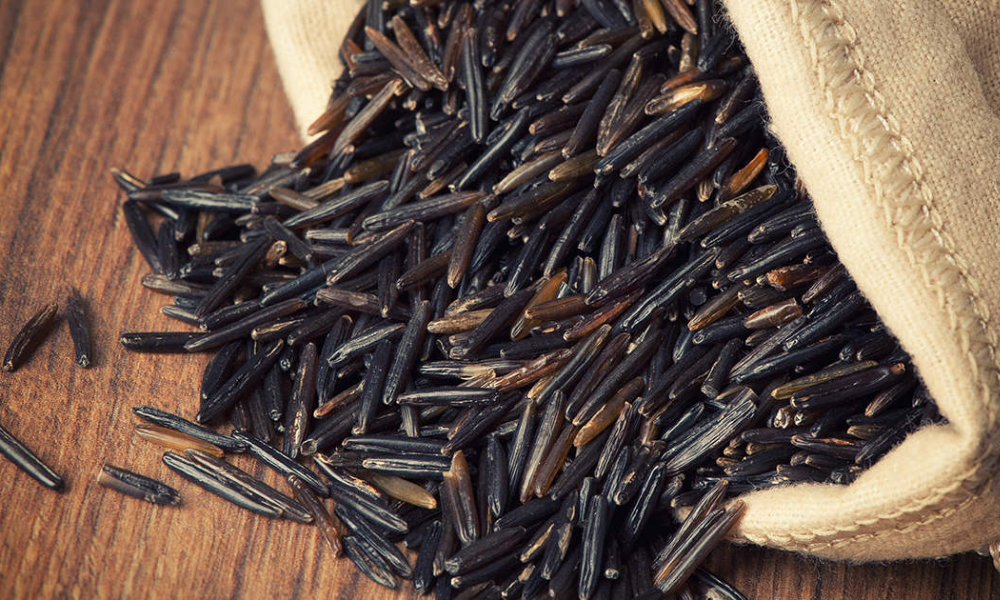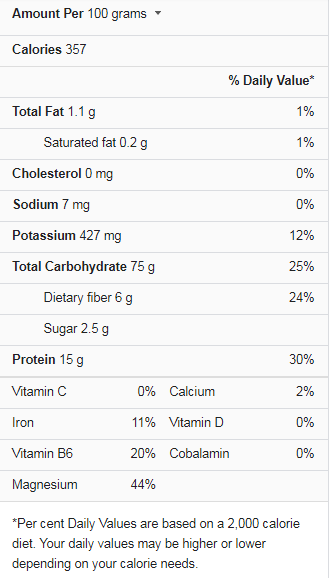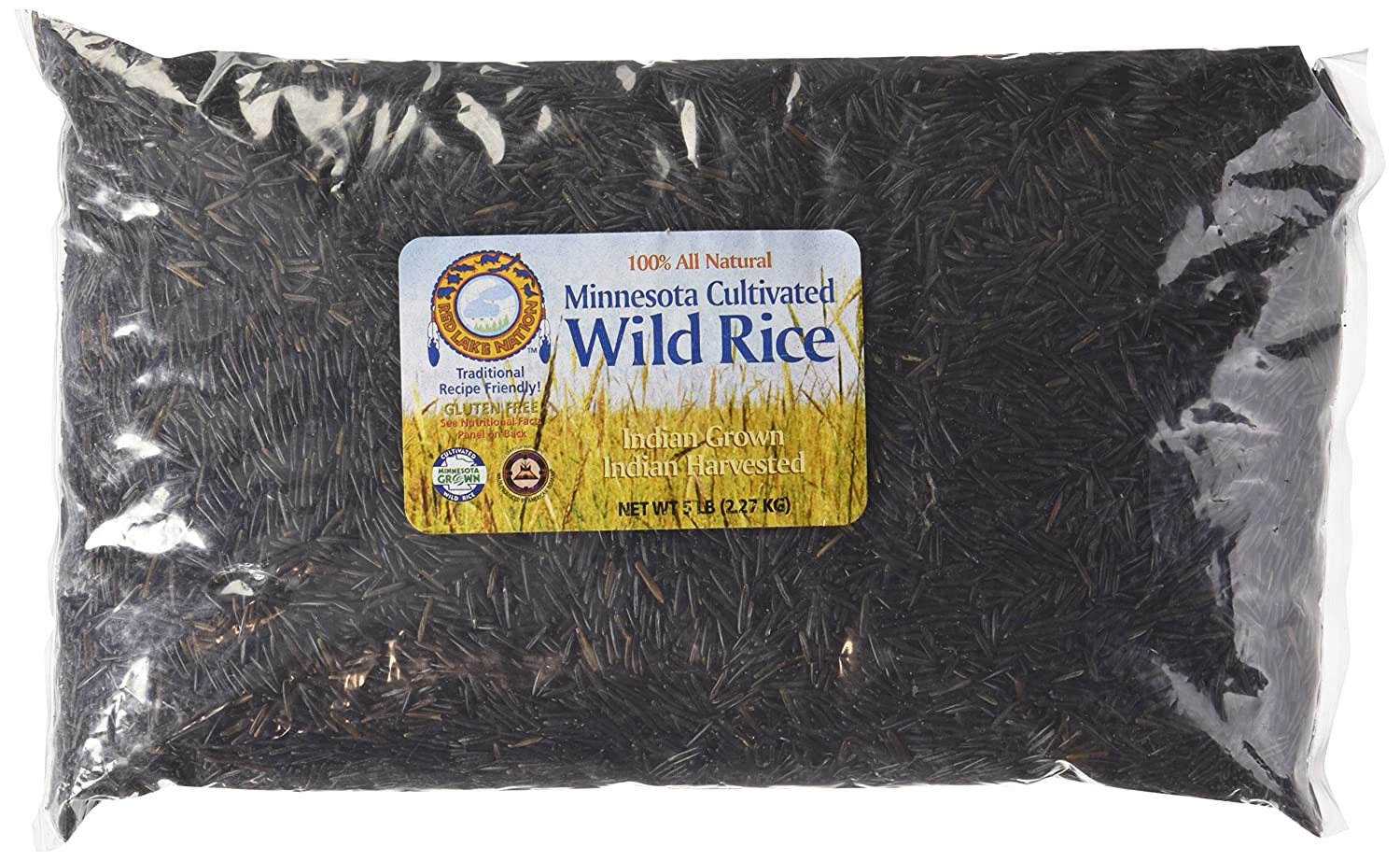Wild rice is a whole, uncooked food that comes in several kinds. Still, the two most generally available are Zizania aquatica and Zizania palustris, often known as Northern wild rice and wild rice. Paddy rice is now farmed in some regions of Minnesota and California, but pure wild rice, also referred to as “lake rice,” is still available. The harvesting and preservation efforts done by several Ojibwe villages in Minnesota are primarily to blame.
This kind of marine grass exists, and processing it takes time. The first step is the grain harvest. Then, they are heated. Finally, the husks are taken off. Black and brown kernels are mainly consistent in color. Paddy rice has a more regular shape and is consistently dark brown or black.
In contrast, the shape and color of Lake Rice can be either long and thin or short and plump, and any shade from purple to brown to black. Even though various species of wild rice are recognized for their flavor, authentic lake rice is regarded to have a richer flavor than the more widely consumed paddy rice.
What is Wild Rice?
Wild rice is not rice, despite its name. It is not directly related to rice, despite being the seed of aquatic grass. Natural habitats for this grass include the margins of lakes and streams and inaccessible freshwater marshes. Wild rice comes in four different species. One is a vegetable that is native to Asia. The remaining three are grown as grains and are indigenous to North America, most notably the Great Lakes region.
The grain that may be gathered from any of the four species of grasses that make up the Zizania is wild rice, sometimes Canada rice, Indian rice, or water oats. It is referred to as rice only because it cooks and looks like other forms of rice. Native Americans were the first to cultivate and harvest wild rice, and they have been consuming it as a staple diet for hundreds of years.
North America and China have historically harvested and consumed grain, while consumption in China has decreased because the plant’s stem is consumed as a vegetable. Although they are all near cousins and members of the tribe Oryzeae, farmed rice (Oryza sativa and Oryza glaberrima) and wild rice are not connected directly.
Wild-rice grains have a soft core grain with a mild vegetal flavor and a chewy outer shell. Small lakes and slow-moving streams are ideal environments for the plants’ shallow water growth; frequently, only the wild rice’s blooming head protrudes above the surface. Dabbling ducks and other aquatic animals consume the grain.
Wild Rice Nutrition Facts
Here are Wild Rice Nutrition Facts:
Health Benefits of Wild Rice
Wild rice is a fantastic dietary source since it has a nice balance of protein and fiber. Additionally, it contains few calories. One micronutrient that is prevalent in wild rice is manganese. Manganese functions as an antioxidant and promotes the longevity of the mitochondria in your cells.
Manganese has been shown to help maintain a healthy metabolism. Wild rice is a healthier alternative for persons with celiac disease because it doesn’t contain gluten. Among the other health benefits of eating wild rice are:
Heart Health
According to research, wild rice possesses potent lipid-lowering and antioxidant capabilities. Additionally, it has a lot of nutritional fiber, and getting enough dietary fiber is crucial for maintaining low cholesterol.
Diabetes
Alpha Lipoic Acid can be abundant in wild rice (ALA). According to certain studies, ALA helps those with type 2 diabetes, which could increase the body’s insulin production and lessen the signs of diabetic nerve damage.
Loss of Weight
Most grains, including wild rice, are pretty good at reducing hunger. However, because wild rice is high in fiber, it also has a relatively low-calorie count. Because of this, it can be a suitable choice for those trying to lose weight.
Antioxidants Abundant
Up to 30 times as many antioxidants as white rice can be found in wild rice! Antioxidants are potent compounds that stop cell damage by oxidants, safeguarding your body from illness and promoting healthy aging.
Grain-Free
Wild rice is a marsh grass seed typically not polished or refined, allowing the source to be consumed in its most nutrient-dense form. It is excellent for grain-free diets and provides a choice for people with diabetes and others on special diets.
Minimises Inflammation
Wild rice forms an alkaline solution, unlike the majority of grains. Your body can cure and prevent all types of inflammation thanks to the equilibrium alkaline-forming foods create.
Reinforces Bones
Wild rice enhances bone mass and lowers the risk of stress fractures due to its high phosphorus content.
Increases Energy
Superfoods like wild rice can give your body the proper nutrients to function correctly, preventing weariness. Your energy levels are increased explicitly by a mineral found in wild rice called magnesium.
Aids with Digestion
Dietary fiber helps your digestive system. The excellent fiber content of wild rice will assist you in getting rid of constipation, bloating, diarrhea, cramps, and excessive flatulence.
Improves Immune Function
Wild rice contains vitamins A, C, and E, which are crucial for the healthy operation of our immune systems. These vitamins encourage the body to produce white blood cells, which serve as our first line of defense against invading invaders.
Aids in Muscle Growth
Significant amounts of protein, a nutrient that aids body growth and muscle development, can be found in wild rice.
It’s challenging to comprehend how healthy wild rice is for you, considering all of its advantages! Increase your consumption of wild rice and enjoy the changes to your health!
How to Prepare Wild Rice?
Compared to white rice, wild rice requires more water to cook; a cup of uncooked grains takes longer—up to an hour. However, soaking fantastic rice overnight can cut cooking time by as much as 50%.
Before cooking, rinse the wild rice. There are many water-to-rice ratios, but you generally want three to four glasses for every cup of rice. In addition, stock can be used in place of simple water.
Rice will become tender after being cooked in water, brought to a boil, and then simmered, and it shouldn’t be complicated or crunchy. The wild rice is likely finished when you notice the grains starting to split along the sides.
Many delectable recipes use wild rice, which is frequently used in pilaf and stuffing. Pemmican, a traditional native dish often comprised of dried meat, dried fruit, and animal fat, can also go well.
Why is Wild Rice Healthier than White Rice?
Especially when compared to white rice, wild rice is thought to be a healthier alternative because it is high in antioxidants. Wild rice is a nutrient-dense food due to its low-calorie and high nutritional content. It is an excellent source of plant-based protein and an outstanding amount of minerals. B vitamins, magnesium, and manganese are just a few vitamins and minerals abundant in wild rice.
According to a study, its antioxidant activity is up to 30 times more than white rice. A unique variety of chewy and flavorful grains is called wild rice. It has a more extensive protein content than conventional rice and many essential elements and antioxidants. Additionally, regular consumption of wild rice may enhance heart health and reduce your risk of type 2 diabetes.
Alternating between the two won’t have any adverse effects because brown rice does include more B vitamins than wild rice (making it an excellent option if you’re on a meat-free diet). Both brown rice and wild rice help lower blood sugar in diabetics and people at risk for developing the disease. By the way, here’s how to properly prepare wild rice.
Is Wild Rice Clean Eating?
Remember that purchasing products with 26 ingredients, like Uncle Ben’s 90 Second Brown and Wild Rice Medley, is not healthy eating. Unprocessed whole grains cannot be cooked for 90 seconds. Usually, cooking whole grains takes much longer than cooking processed grains.
It might have bothersome toxins. Ergot toxin, which can be found in grains with pink or purplish patches, can occasionally be found in wild rice. However, it is pretty uncommon. Look for any suspicious grains in your rice before cooking, and throw them out immediately. It’s okay to eat the rest of the batch.
Like white rice, which has had the bran and germ removed, brown rice has a similar amount of calories and carbohydrates. Protein and fiber both encourage feelings of fullness and can support healthy weight maintenance. However, the brown type is higher in protein and has nearly three times more fiber.
Make an effort to obtain your carbohydrates from whole grain foods like brown or wild rice, which include beneficial fiber. Make sure you’re eating the recommended number of carbohydrates daily. You should consume between 225 and 325 grams of carbohydrates per day, according to the Mayo Clinic.
Is Wild Rice Better than Quinoa?
In terms of nutritional value, quinoa, and wild rice are comparable. Although they have somewhat differing vitamin and mineral concentrations, one isn’t always healthier. Enjoy the best of both worlds by eating both. One thing to remember is that quinoa has fewer calories per serving than brown or wild rice.
The protein, B complex, minerals, folate, antioxidants, and maintaining a healthy heart are all present in wild rice and black rice, which contain fewer carbohydrates. Additionally, black rice without gluten contains the most anthocyanin. Although wild rice and basmati rice contain distinct health-promoting elements, we would have to choose wild rice if we had to choose only one.
Wild rice is the better choice because of its higher quantities of protein, fiber, and antioxidants. Given that wild rice has a very high net carb count, it should be avoided when on keto (19.54g of net carbs per 100g serving). To stay in ketosis, you should keep your daily net carb intake to 20–30g.
Is Wild Rice Good for your Liver?
Here, we demonstrate that wild rice improves insulin resistance in mice fed a high-fat diet (HFD) by lowering body weight, hepatic steatosis, and low-grade inflammation.
Cooked rice might help prevent nonalcoholic fatty liver disease by modulating the gene expression associated with lipid metabolism and HF-induced fat buildup.
The liver has difficulty processing refined sugars and carbs, such as those found in white bread, pasta, sugar, white rice, sweets, and cakes. Limit the number of foods you eat that are manufactured with white flour or sugar.
Background: Both white and brown rice, which is unprocessed, include a variety of substances that are good for human health. However, obesity, a significant risk factor for nonalcoholic fatty liver disease, might be exacerbated by the starch content of rice (NAFLD).
Oatmeal has the added benefit of assisting in weight loss, particularly in the abdomen, which lowers your risk of developing liver disease. This dish has a lot of fiber, which supports healthy liver function.
Conclusion
Wild rice contains astounding levels of antioxidants. Antioxidants work to neutralize free radicals, which are dangerous byproducts of cellular metabolism that can alter or transform healthy cells into cancerous ones.
One example is the accumulation of free radicals in the skin, which can cause wrinkles, age spots, and a delayed rate of blemish healing. For the cells in the eye, antioxidants can prevent the development of cataracts and macular degeneration. Wild rice is used in various foods, including sauces, casseroles, soups, salads, and desserts.
Recently, wild rice has been included in mixes for cookies, pancakes, and muffins. Wild rice’s consumer acceptance was boosted by the advent of long-grain conventional rice blends (Oryza) in the early 1960s. Fans of nutritious meals enjoy the wild rice in its natural stands.




